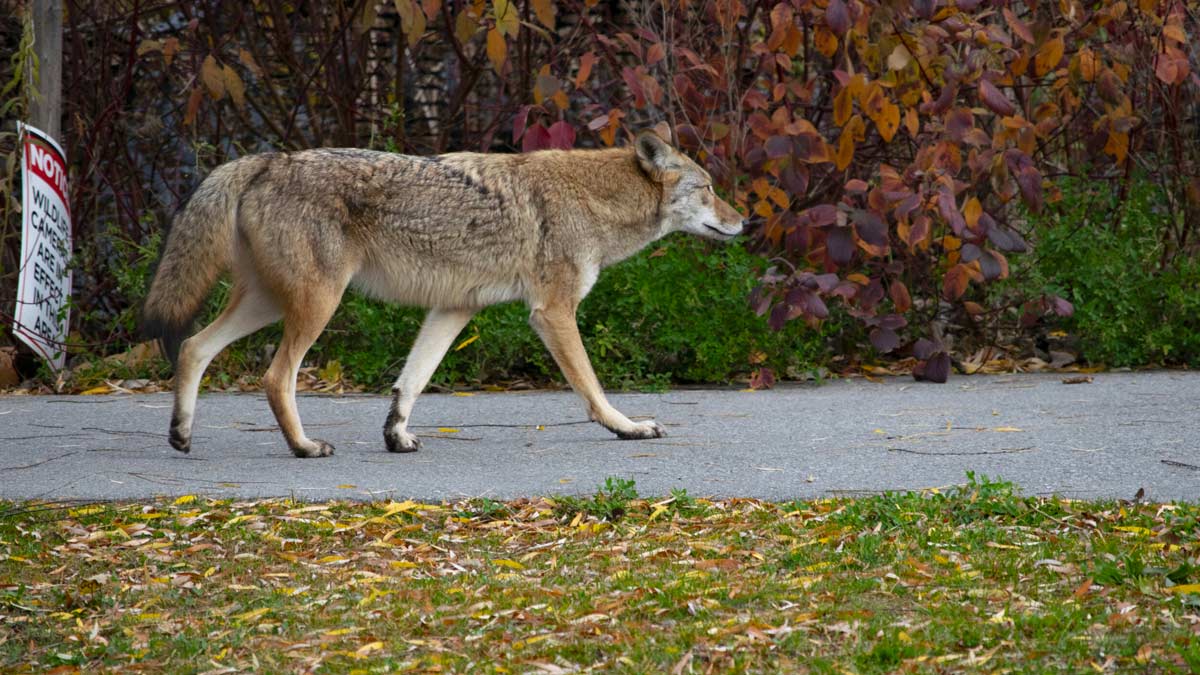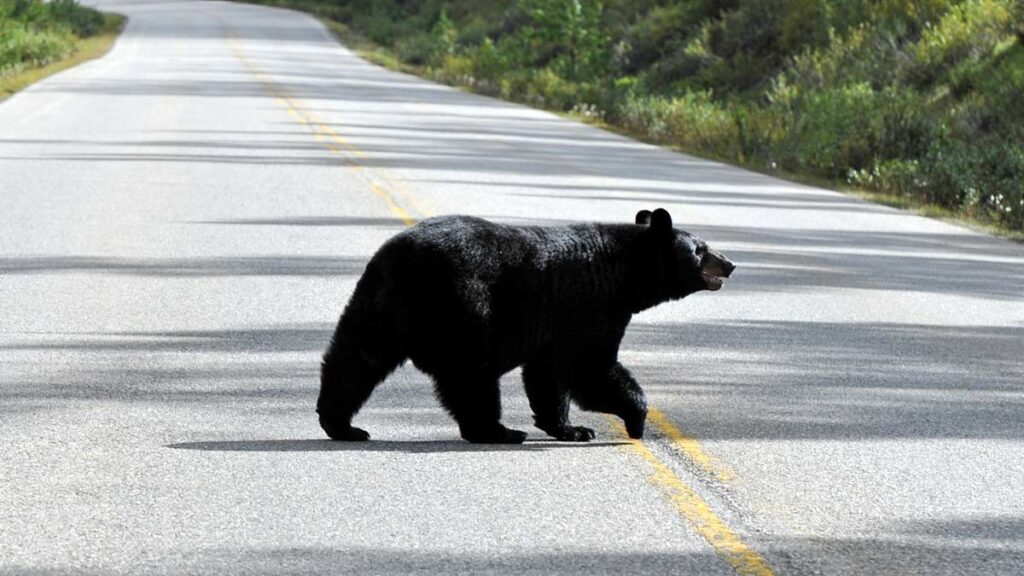
Keeping Florida's Coyotes at Bay
Comprehensive Strategies for Florida Neighborhoods
Updated on: January 2024

The rise of coyote sightings in Florida neighborhoods has become an unmistakable trend, signaling an intersection between urban development and the persistence of native wildlife. These adaptable creatures, once residents of the expansive wilderness, are now finding sustenance and shelter amidst suburban sprawl. As encounters increase, it is important to recognize that interactions with these animals have potential risks, especially to pets and young children. As Florida’s urban areas continue to grow and intersect with natural habitats, proactive measures to prevent unwarranted encounters with coyotes should be prioritized. Creating a balanced coexistence with merging environments requires an informed and collective effort.
Find What You Need
Understanding the Coyote Problem
As interactions and the prevalence of Coyotes in Florida neighborhoods increase, it is important for residents to understand the potential threat that these animals pose to one’s safety and how to be cautious.
Coyotes in Urban Florida
Florida’s urban sprawl, especially around cities like Orlando, Tampa, and Miami, has witnessed a marked increase in coyote sightings over the past decade. Reports suggest that as we continue to expand our neighborhoods, pushing further into what was once wilderness, coyotes adapt by infiltrating suburban territories in search of food and shelter. With a notable decline in their natural habitats due to construction and land clearance, coyotes, being opportunistic feeders, find urban areas a viable environment, especially given the abundance of food sources such as household waste, garden produce, and even small pets.
The balance between residential areas and these adaptable animals is delicate as coexistence mandates a shift in our behavior and understanding. Secure waste disposal methods, ensuring pets aren’t left unattended, and community education can play a pivotal role in maintaining a safe environment for all. Brands like “Bearicuda Bins” offer animal-resistant trash cans starting at $230, which could deter coyotes from scavenging in residential areas.
Dangers and Concerns
Coyotes, by nature, are wary of humans. However, when they associate urban areas with easy meals, they can become bolder and potentially pose a threat. While fatalities from coyote attacks are extremely rare, there have been incidents, particularly in South Florida, where pets, especially cats and small dogs, have been attacked.
The “Sunrise Incident of 2019” for instance became a prevalent story where a family in Sunrise, Florida, reported that their small dog was attacked and taken by a coyote during an early morning walk. Such incidents imply the necessity of proactive measures. Residents are advised to carry deterrent sprays, like the “CoyoteVest Pet Body Armor” spray, which costs around $40, when walking pets. Moreover, in the event of an encounter, experts recommend making yourself appear larger, maintaining eye contact, and making loud noises to scare them away. Avoiding feeding or approaching them is essential, as this only diminishes their innate fear of humans and exacerbates potential conflicts.
Take Away
Navigating the challenge of coyotes in Florida requires a collective effort, blending individual vigilance with community collaboration and expert guidance. To protect our neighborhoods and coexist harmoniously with local wildlife, residents must stay informed and adopt proactive, humane measures. Embracing this united approach enhances our connection to Florida’s wildlife while ensuring safety for all.
Attraction Factors for Coyotes
Residents should understand what draws coyotes to their property as well as their behaviors in order to be able to properly avoid encounters.
Food Sources & Attractions
One of the primary reasons coyotes are drawn to neighborhoods is the promise of easy meals. Open trash bins, pet food left outdoors, and even compost heaps can serve as an attraction. For instance, brands like “Rubbermaid’s Animal Stopper Trash Can”, retailing at around $60, are designed to keep critters out and might be a worthy investment for households in coyote-prone areas. Furthermore, homeowners growing fruits and vegetables might unknowingly invite coyotes, who are omnivorous and can be attracted to ripe produce. In terms of landscaping, while certain plants like the prickly pear cactus or rosemary might deter coyotes due to their thick or pungent nature, no plant can be considered a surefire repellent. Nonetheless, maintaining a clear boundary around one’s property, devoid of dense underbrush, denies these creatures hiding spots, potentially making an area less enticing.
Time and Behavior Patterns
Seasonal changes can influence coyote activity. Spring, when pups are born, and fall, as juveniles start to forage independently, are peak times for sightings in neighborhoods like Boca Raton or Fort Lauderdale. Furthermore, twilight hours, dawn, and dusk are when these nocturnal animals are most active, so it’s important for residents to be extra vigilant during these times. As for natural predators, in Florida, the adult coyote has few threats. However, their pups might fall prey to larger birds of prey or alligators in certain wetland areas. This lack of natural predators gives coyotes a sort of audacity, allowing them to explore territories, like suburbs, with less fear.
Prevention & Deterrents
Encounters with coyotes can be significantly reduced by utilizing the various physical deterrents that are available along with common non-lethal methods. Taking proactive measures to ward off these animals can greatly increase the safety of your home.
Physical Deterrents
Fencing remains a prevalent strategy for deterring coyote entries. Coyotes are adept jumpers, and a height of at least 6 feet is recommended for fences, with a roller bar or Coyote Roller – a product specifically designed to prevent animals from gaining a grip on the top of a fence, priced at around $100 for a four-foot section – on top to enhance effectiveness. Angling the top outward or installing an apron buried several inches into the ground can also deter digging beneath. Motion-sensor lights, such as the “Mr. Beams Wireless Spotlight”, available for roughly $40, can startle and deter coyotes momentarily, but their efficacy as a lone deterrent is limited. Resorting to professional wildlife removal services like “Florida Wildlife Trappers” is an option, but can be problematic because while they can promptly remove problematic coyotes, relocation often leads to other challenges, including territorial disputes among coyotes.
Technological and Non-Lethal Methods
Modern solutions like audio deterrents, especially those playing sounds of larger predators, can keep coyotes at bay. Devices like “Predator Guard”, which costs about $30, emit aggressive predator calls, but its effectiveness can diminish over time if coyotes realize there’s no real threat. Non-lethal repellents, such as “Shake-Away Coyote Urine Granules” priced at around $20 for a 28.5 oz bottle, create an illusion of predator presence, but their application needs to be regular and might not be foolproof.
Community Efforts
Community patrols have proven effective in areas like Palm Beach Gardens, where residents took turns patrolling during peak coyote activity hours. Education plays an important role and hosting seminars with wildlife experts, distributing informational pamphlets, or even creating neighborhood online forums can keep residents informed. Collaborations with local authorities can lead to comprehensive coyote management plans, ensuring a consistent approach. In Clearwater, a community-driven initiative combined with local authorities’ support saw a drastic reduction in coyote incidents within a year, marking a success story others can replicate.
Safeguarding Pets & Property
To ensure the safety of your home and family, simple steps can be taken to decrease potentially dangerous interactions and coexist with the existing wildlife.
Pet Safety Measures
Pets, particularly smaller breeds of dogs and outdoor cats, are at increased risk from coyote encounters, especially during the twilight hours and nighttime. Simple steps like ensuring pets are indoors during these high-risk periods can significantly reduce potential confrontations. When walking dogs, using a short leash, as opposed to retractable ones, gives owners better control. For those with outdoor spaces, installing “PetSafe Wireless Fences”, which start at $260, can create a boundary for pets, ensuring they don’t wander into vulnerable areas. Additionally, products like “CoyoteVest”, priced from $100, offer a protective wearable for pets, designed to deter a coyote’s bite or grip.
Coexisting with Florida’s Wildlife
Florida’s diverse wildlife is one of its treasures, and coexistence is not just possible but necessary. Simple practices like securing trash, feeding pets indoors, and avoiding direct interactions with wild animals are foundational. Local wildlife organizations such as the “Florida Fish and Wildlife Conservation Commission (FWC)” play a significant role in managing and educating about the coyote population. They often offer workshops and online resources that promote balanced living between residents and the state’s vibrant wildlife, ensuring both humans and animals thrive in the unique Floridian ecosystem.
Legal & Regulatory Insights
In the state of Florida, coyotes are not afforded protected status, meaning they can be trapped or hunted year-round without the need for a game permit. However, if using firearms, residents must ensure compliance with all state firearm regulations and local ordinances. Despite the lack of a specific permit for coyote removal, residents who opt for trapping should be aware of ethical considerations, ensuring humane treatments such as avoiding leg-hold traps. “Havahart” traps, which retail for around $80 for a large-size trap, are often recommended for their live-catch method, allowing for relocation without causing undue harm to the animal.
While state-wide rules give broad guidelines, local municipalities in Florida might have stricter rules regarding wildlife management. For instance, cities like Orlando or Miami might have bylaws regarding the discharge of firearms within city limits, making hunting impractical. Additionally, some localities might have partnered with wildlife organizations, offering services or recommendations for humane coyote removal. Before taking action, it’s crucial for residents to consult with their local city or county offices to ensure any coyote deterrence, trapping, or removal measures are in line with local ordinances.


